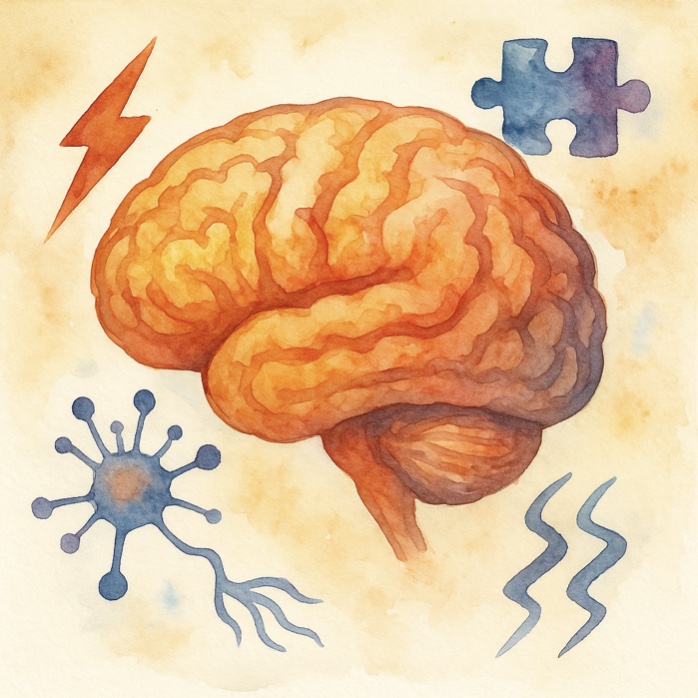
A Conversation Between Valley Wellness and Dr. Michelle Sexton
For this article, the CSO of Valley Wellness sat down with Michelle Sexton, ND, to discuss cannabis and neurology.
It is not often that a dispensary operator calls a researcher with a scientific inquiry. “My employees want to know about neurological conditions and cannabis—they were asking a lot of questions,” she said, her voice crackling through a weak cell signal. The line faded in and out, a fitting metaphor for the current state of research: high interest, low clarity, and a frustrating disconnect between what people observe in the real world and what science is able, or allowed, to confirm.
The Gap Between Patient Experience and Research
Despite the growing number of patients using cannabis for neurological symptoms—pain, tremors, spasticity, migraine, seizures, anxiety, agitation—the peer-reviewed data remains remarkably thin. Few clinical trials are underway. Even fewer are designed with the statistical power or FDA oversight required to change medical practice. And now, with Mississippi’s cannabis research program funding being cancelled, the last publicly supported pathway for federally-compliant cannabinoid drug manufacturing has gone dark. We are, once again, trying to study the shadows of patient experiences.
The Endocannabinoid System and Brain Function
And yet, in the flickering torch light of what evidence we do have, something remarkable appears. A pattern, subtle but persistent, pointing toward the endocannabinoid system (ECS) as a master regulator of neurological balance—an internal tuning fork that governs synaptic rhythm, emotional resonance, and immune restraint. The ECS, composed of lipid-based neurotransmitters, cannabinoid receptors, and catabolic enzymes, operates less like a circuit board and more like jazz: improvisational, context-sensitive, and always listening for feedback.
How THC and CBD Interact with the Brain
Cannabinoids like THC and CBD are not blunt instruments; they are, at their best, conductors in this orchestra of cellular communication. THC modulates neural excitability through CB1 receptors, suppressing excessive neurotransmitter release and, in certain contexts, calming the storm of overactive circuitry. CBD, more diplomatic than dominant, enhances endogenous signaling by inhibiting the enzymes that break down anandamide, and interacts with serotonin and TRP channels, casting a wider net of therapeutic influence. Most importantly, they improve quality of life in patients with neurological diseases.
Why Neurological Patients Are Underserved
Dr. Michelle Sexton, a naturopathic doctor, author, and clinical cannabis researcher at UC San Diego, sees this play out in real time. She notes that while neurodegenerative and neurological conditions are a logical domain for cannabinoid therapy, they remain oddly underserved. “Neurological diseases are almost overlooked,” she says. “I get almost zero referrals from neurologists these days for patients with neurological conditions. Many are likely using or going to try cannabis products without an educational consult.”
The Science Behind Neuroinflammation and Cannabinoids
Her frustration is rooted not in ideology, but in physiology. “We know that CB1 and CB2 receptors on neurons and immune cells downregulate cytokines and can help repair the blood-brain barrier,” she explains. “Neuroinflammation is relevant to every neurological condition out there, as well as viral infections.” That cannabis could influence such fundamental terrain—reducing inflammatory signaling, stabilizing neural tissue, even reshaping immune-brain dialogue—should be a research priority. And yet, it lingers in limbo, lost in the bog of infighting over federal scheduling weighted down by political hesitation.
Evidence of Neuroprotective Benefits
The neuroprotective therapeutic prospects are vast. In epilepsy, CBD has already proven itself as a well-tolerated anticonvulsant, with FDA approval for two rare childhood seizure disorders. In multiple sclerosis, Nabiximols (a 1:1 ratio THC:CBD oromucosal spray) has been approved in over 25 countries for spasticity. In Alzheimer’s disease, preclinical research suggests cannabinoids may reduce beta-amyloid accumulation, dampen microglial overactivation, and improve behavioral symptoms.
Patient Stories and the Power of Real-World Experience
Parkinson’s patients, meanwhile, navigate a different terrain. “I have a Parkinson’s disease patient with a severe non-motor symptom of anxiety,” Dr. Sexton recounts. “He is hesitant to use cannabis during the day, despite his wife’s insistence that she notices improvements.” This quiet negotiation between symptom and stigma, between subjective benefit and clinical silence, repeats itself across countless households.
Reframing Pain as a Neurological Condition
Pain, of course, straddles the boundary between neurology and everything else. Sexton makes a point that often goes unheard: “Neuropathic pain is a neurological condition—so is nociceptive pain, noci-plastic pain. Research shows that inhaled vaporized cannabis, low in THC, is sufficient for certain types of pain.”
Refocusing on Implementation Over Novelty
What is perhaps most startling is not what we don’t know, but what we already do. “The cannabinoids such as THC and CBD—we know how they work, we have dosing information and guidelines,” Sexton says. “Why exploit a new cannabinoid? People are doing well with THC.”
The desire for novelty in cannabinoid science—the next molecule, the next mechanism—often distracts from implementation. We don’t need a more exotic plant. We need better bridges between clinical practice and the molecular mechanisms we already understand. And we need trials that reflect real-world use, not just synthetic abstractions of it.
A Growing Need for Real-World Trials
Meanwhile, the need grows louder. With Alzheimer’s disease poised to reach epidemic proportions in the United States, Dr. Sexton offers a pointed reminder: “Low dose THC can quench neuroinflammation, and that is good.”
The Institutional Lag
The implications are not subtle. They are structural. Our regulatory frameworks, insurance systems, and medical curricula remain mostly mute on the ECS. Patients, caught in the drift between prohibition and pragmatism, turn to budtenders instead of neurologists. Therapies drift into self-experimentation. And research, though brilliant in patches, lacks the institutional architecture to shape policy or standard clinical practice.
Moving Toward Balance
Still, the signal (patient reports) persists above the noise (low clinical research evidence). In the static, in the anecdote, in the rare study that clears the many hurdles placed before it. The ECS is a system designed to restore balance. It is beyond time that our systems of medicine begin to balance patient-reported outcomes with the “evidence”.

